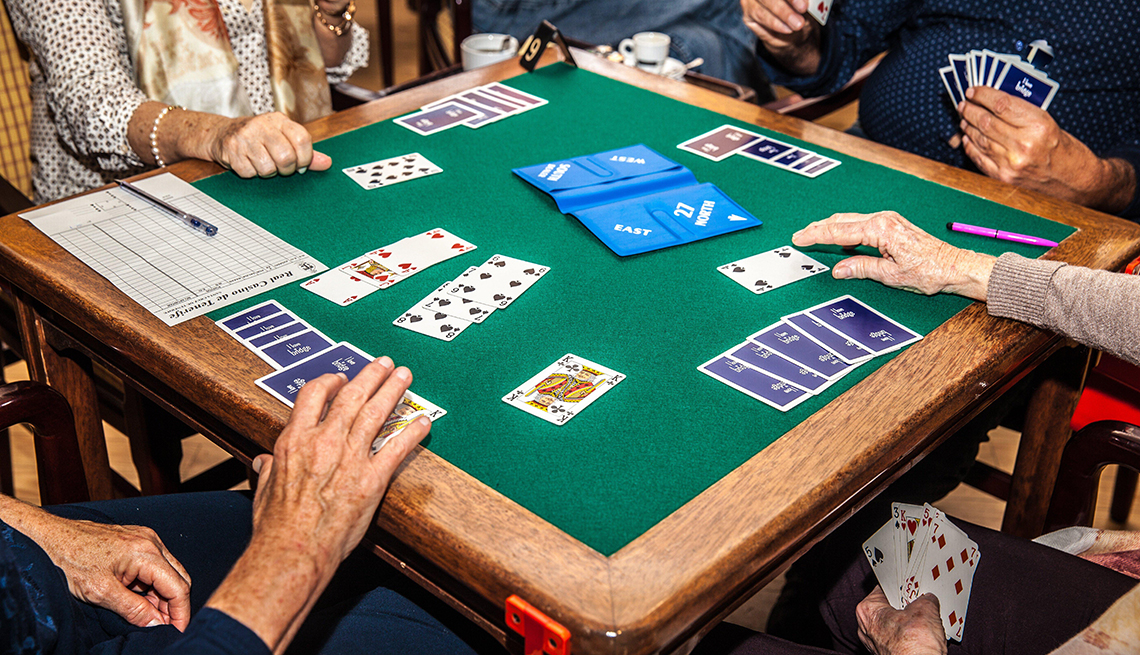AARP Hearing Center
The coronavirus pandemic has prevented bridge players from getting together to play the strategic card game, but many are meeting up online for a match with both friends and strangers.
The American Contract Bridge League (ACBL), the world's largest bridge organization, has seen a fivefold increase in the number of tables being played online since social distancing became the norm.
"It's a godsend during this pandemic,” says Helen Gensler, who is in her 80s and lives in Tucson, Arizona. Using the website Trickster Cards, she plays two scheduled card games a week with friends — using video and audio — and sometimes plays additional games spontaneously with strangers or a robot. “It's good for the brain, good for relaxation, and certainly takes my mind off a lot of the problems going on,” Gensler says.
Traditional bridge games pit teams of two players against each other, and bridge groups will often have several games going at once, switching up teams and players.
Playing bridge has been shown to improve reasoning skills and both long- and short-term memory. In fact, research from the Mayo Clinic in 2017 indicated that bridge — with about 750 trillion possible hands — can help people avoid mental decline before the onset of dementia. On top of that, an older study out of the University of California, Berkeley, found strong evidence that an area in the brain that's used when playing bridge stimulates the immune system.
Taking your bridge group online not only allows you to stay connected with friends and replicate face-to-face tournaments, it creates opportunities to connect with players from all over the world.
Earn incentives
There's no need to put on hold your quest to attain the rank of “Life Master” now that the ACBL is allowing clubs the opportunity to award the same type of “masterpoints” online that used to be offered only at face-to-face tournaments. Those masterpoints are the ACBL's way of tracking players’ progress through the bridge rankings.
Compete against people you know
Before the pandemic, players could choose their partners on Bridge Base Online, but not their opponents. Players these days can compete with friends as well as strangers, creating an environment that may feel more familiar and safe, particularly for those new to the game.



































































